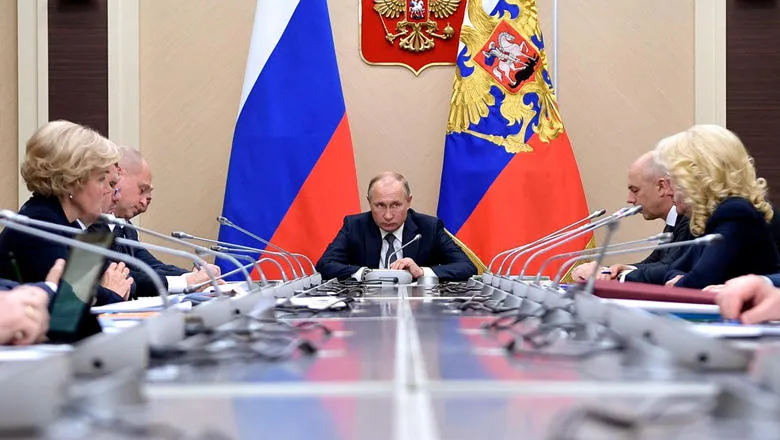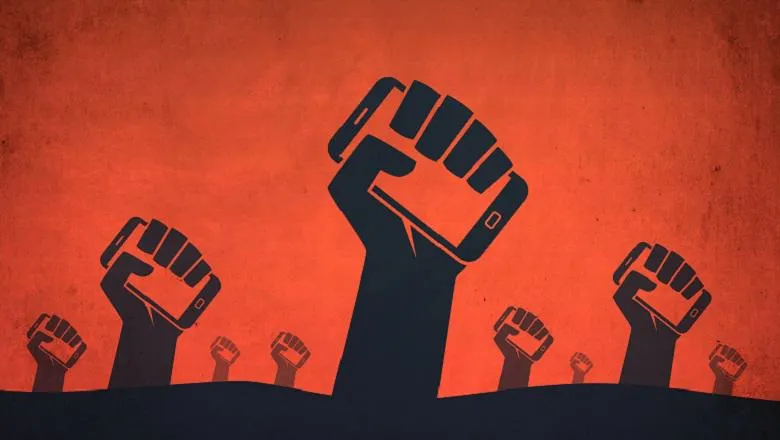Russia media proactively engage with alternative information – they have been actively using this strategy at least since 2014
Maxim Alyukov
25 February 2022
How do you sell a war to those who do not want it?
Maxim Alyukov, Research Fellow, King’s Russia Institute
While Russia’s regular army has initiated a full-scale military invasion of Ukraine, a completely different picture is presented to the domestic audience.

State media coverage is supposed to convince citizens in the legitimacy of the invasion and rally their support. This is how it is done. There are three key features characterizing this coverage – the war is presented as legitimate, successful, and clean.
First, news reports are structured in the way to convince citizens that Russia’s actions are a defence rather than an offence. They build on typical Russian state reporting on eastern Ukraine since 2014, which is very familiar to people, and echo Putin’s speech justifying the invasion. According to this narrative, the Ukrainian government is an illegitimate fascist junta and a puppet of the West which has been oppressing the population of eastern Ukraine. As a result, Russia’s actions are just a necessary and forced response.
Second, the operation is presented as an overwhelming success. The Ukrainian army is presented as consisting of two groups. The minority are violent and vicious right-wing regiments who often use civilians as shields or for provocations. They are to be captured and tried by tribunal if possible or destroyed. The majority are just conscripts. They are to be treated with respect because they are forced to fight against Russia by military orders. News reports claim that they fall or surrender easily because they have no motivation and were forced to fight against Russia.
Third, the Russian state-media use technical military jargon to minimise the public’s aversion to the war. People know that war always leads to human casualties and destruction. In order to prevent people from building this association, state-controlled media use terms like ‘special operation’ instead of ‘war’ or ‘invasion’, ‘high precision strikes’ instead of ‘bombing’, etc. Journalists insist that Russia is attacking only military infrastructure, while cities and civilians are untouched. All information about casualties on the Russian side is concealed because the public is averse to it, especially when it comes to citizens’ own compatriots.

In addition, Russia media pro-actively engage with alternative information – they have been actively using this strategy at least since 2014. For instance, images of destroyed buildings in cities posted by Ukrainian citizens are incorporated in news reports and debunked. Journalists claim that these photos are fake. E.g., they were taken in eastern Ukraine long ago, and the buildings were actually destroyed by the Ukrainian army. Based on this strategy, state-controlled media attempt to instil distrust in alternative information – such analyses are often followed by calls not to trust social media because they are used for disinformation.
Finally, Russia’s own anti-war movement is not covered. Recent protests across the country were quite significant. These protests are not reported on national state media at all, except for some local channels which broadcasted the Ministry of Interior’s statements urging citizens not to participate in protests. The idea behind this strategy is that by reporting on events journalists publicise them, even if they criticise them. Ignoring any anti-state protests has been the main strategy of Russian state media for years.
These tropes are used by state TV channels, but they also spread to other media. On February 24, Russian media watchdog Roskomnadzor made a statement claiming that based on Russian ‘fake news law’ introduced in 2019 Russian media ‘are obliged to use only information from official sources’ to report on the operation in Ukraine. This constitutes a soft form of wartime censorship which incentivises non-state sources to use the same tropes described above even if they do not fully agree with them.

